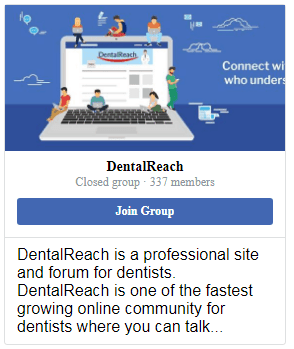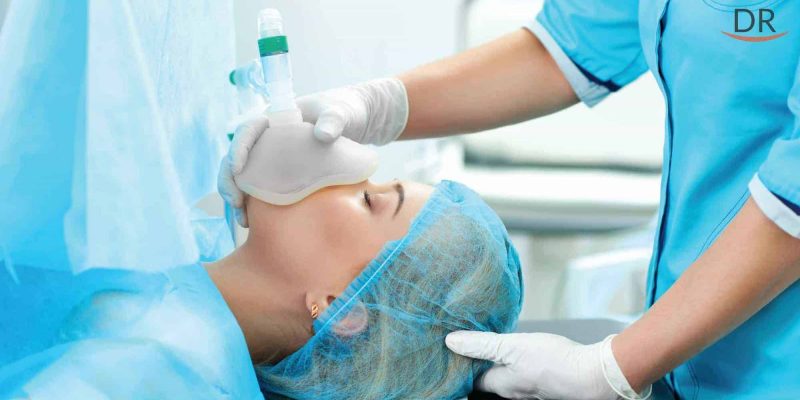Performing a painless procedure is one of the key factors for establishing a good rapport with the patient and achieving patient co-operation in order to complete the procedure efficiently. In dentistry, most of the times it can be achieved with the help of local anaesthesia. But in cases where there is a complete lack of patient co-operation or the systemic background of the patient is such that local anesthesia cannot suffice, the use of sedation or general anesthesia may be warranted depending on the compliance of the patient and the type of procedure to be performed.
It is estimated that around 50 million people have dental fear, anxieties and phobias about visiting the dentist. This can prevent them from getting routine care and lead to more complex problems which requires more extensive work. By using means like sedation we can ensure that the patient receives all the required dental treatments while helping them remain calm and relaxed.
Definitions
1. Conscious sedation :
A minimally depressed level of consciousness, that retains the patient’s ability to maintain an airway independently and respond appropriately to physical stimulation and verbal command.
2. Deep Sedation :
A controlled state of depressed consciousness and reflexes, including inability to respond purposefully to a verbal command.
3. General Anesthesia :
A controlled state of unconsciousness, accompanied by partial or complete loss of protective reflexes, including inability to maintain an airway independently and respond purposefully to physical command and verbal stimuli.
Differences between general anesthesia and sedation
While both sedation and general anesthesia are forms of anesthesia and sedation is a component of general anesthesia, they are different in several respects.
Patients under general anesthesia have a complete loss of consciousness. This means that the patient will not feel, hear or remember anything. In contrast, a state of somewhere being very sleepy, being relaxed in consciousness and yet not unconscious, characterizes sedation. Moreover patients maintain their natural physiological reflexes and are capable of breathing on their own.

Cardiovascular function is usually unaffected or maintained throughout various stages of sedation while it is usually impaired in general anesthesia and careful monitoring is necessary.
Generally no extensive investigations are required before sedation and there is no need of premedicating the patient. While General anesthesia requires all basic investigations as well as pre-medication.
NPO is not required in sedation while it is strictly mandatory for general anesthesia. NPO means patient should be instructed to fast or to have nothing by mouth, a few hours before anesthesia.
Nonetheless, the recovery period from sedation is typically quicker than with general anesthesia.
Drugs used in Sedation/General anesthesia
I. Inhalation
A. Nitrous oxide
Can be used for mild to moderate levels of anxiety, for brief procedures. It has rapid onset and early recovery.
Cannot be used in claustrophobic patients and in respiratory tract infections.
B. Desflurane
C. Sevoflurane etc.
II. Oral ( various combinations are used)
It has got better acceptability and ease of operation with less incidence of ARD ( Acute respiratory distress)
A. Hydroxyzine
Mild sedative with antiemetic and anticholinergic activities as well.
Better used in combinations with other drugs.
B. Promethazine
Used in mild levels of anxiety.
Better used in combinations with other drugs.
C. Chloral hydrate
It has a long working time with wide range of actions, so used for all levels of anxiety.
It is not recommended in children below 6 yrs of age.
D. Diazepam
Safe for use in children below the age of 6 years.
Multiple dosages required.
E. Meperidine
F. Chlorpromazine. Etc.
III. Intramuscular – rapid onset of action.
A. Ketamine
Is a potent analgesic with potential of oral use but the safety of oral use is not yet established.
B. Midazolam
Possesses hypotonic, anticonvulsant and muscle relaxant properties along with antegrade amnesic and anxiolytic properties.
Rapid onset of action but can be used mainly for short procedures.
IV. Intravenous –
A. Midazolam
Most rapid onset of action.
Permits titration and is easily reversible.
Requires extensive armamentarium training and precautions to be administered in patients with significant thyroid and hepatic diseases.
V. Rectal, subcutaneous or submucosal routes are rarely used.
Indications in dentistry
1. Patients with certain physical, mental or medically compromising conditions.
2. Patients wherein local anesthesia is not effective or patient is allergic to it.
3. Patients who have sustained extensive orofacial trauma.
4. Fearful, uncooperative and anxious patient with no expectation that behaviour will improve.
Contraindications
1. Chronic obstructive pulmonary disease
2. Pregnancy
3. Myasthenia
4. Epilepsy
Anesthetic emergencies in dentistry
Serious anesthetic emergencies are infrequent but do occur. Being prepared for emergencies is very important for ameliorating the impact of these events as despite being rare, they have a great impact. The practitioner should have thorough knowledge of handling emergencies including practising emergency skills.
COMMON RESPIRATORY EMERGENCIES
1. LARYNGOSPASMS
- Laryngospasm is a spasm of intrinsic muscles of the larynx causing closure of the airway at the level of vocal chords. It can be either complete or incomplete.
- The classic sign is a high pitched stridor or crowing for partial obstruction and silence for complete obstruction. Patients may also exhibit paradoxical chest wall and abdominal movements and oxygen desaturation.
- The cause of laryngospasm include local irritation and depth of anesthesia( Inadequate depth can sensitize the airway)
- Prevention includes proper airway maintenance. The surgeon uses throat pack or partition to keep foreign material out of the airway.
- In a suspected case, head should be properly positioned and airway suctioned to clear any foreign bodies.
- 100% oxygen should be administered via full face mask.
With a continuing laryngospasm, the next step is to ventilate the patient. If patients cannot be ventilated, succinylcholine 0.15 to 0.30 mg/kg i.v should be given for partial obstruction and 0.3 to 0.6 mg/kg for complete obstruction.
If the spasm continuous, an intubating dose of succinylcholine 1mg/kg should be given along with endotracheal intubation.
Note: Succinylcholine may act as a triggering agent for MH in patients with family history of MH(Malignant hyperthermia)
2. BRONCHOSPASM
- It is a reflex bronchiolar constriction that can be centrally mediated or a local response to airway irritation.
- It can be elicited by stimuli such as secretions, blood or foreign bodies.
- It presents as expiratory wheezing and increased airway resistence.
- If patient is minimally sedated, they should be made to inhale a B agonist inhaler, such as Albuterol (4-8 puffs).
- In a deeply sedated patient 100% oxygen with a full face mask should be initiated.
- If spasm still persists, 0.3 to 0.5 mg 1;1000 epinephrine should be administered subcutaneously.
- If spasm still continuous, endotracheal intubation should be considered.
3. AIRWAY OBSTRUCTION
- It is one of the more commonly encountered anesthetic emergencies usually located in the upper airway and caused by loss of pharyngeal muscle tone causing tongue to displace posteriorly and occlude the airway.
- Other causes may include foreign bodies such as teeth, aspirates, prosthesis, or surgical instruments.
- Clinical signs include paradoxical breathing with sternal retraction and abdominal muscle activity manifesting as a rocking motion. Partial obstruction may exhibit stridor.
Emergency management protocol includes –
- Chin lift/jaw thrust
- Pull tongue forward, reposition airway
- Full face mask, 100% oxygen, positive pressure ventilation.
- Consider intubation
- Consider cricothyrotomy
- Consider tracheostomy.
4. EMESIS AND ASPIRATION
- Causes include anxiety, narcotics, pain and anesthesia which increases the gastric emptying time.
- Some medical conditions also increases the risk of aspiration which include obesity, hiatal hernia, pregnancy, gastroesophageal reflux disease and obstruction of GIT.
- Clinical signs include rales, dyspnea, tachycardia, bronchospasm and partial airway obstruction with liquid aspirate.
CARDIOVASCULAR COMPLICATIONS
1. HYPERTENSION
- Preoperative hypertension increases the risk of ischemia, infarction, heart failure and stroke.
- The agents used for management include esmolol, labetalol, NTG ( spray or tablet) and hydralazine.
- Patients on maintenance antihypertensive agents should have those agents maintained during surgery.
However, if the patient is on diuretic in addition to angiotensin agent, that diuretic should be held preoperatively to reduce the risk of hypotension.
2. HYPOTENSION
- It develops as a result of peripheral venous pooling of blood.
- Propofol/ volatile anesthetic agents are known to decrease BP.
- Before vasopressors are given, the depth of anesthesia should be reduced and a bolus of IV fluid should be tried, repeated as needed.
If an allergic reaction is suspected, an intramuscular dose of 0.3 mg of 1;1000 Epinephrine should be considered.
Patients that present with hypotension and bradycardia, 0.5 mg IV atropine every 3 to 5 minutes with a maximum dose of 3 mg should be considered. Alternative to atropine is use of ephedrine or phenylephrine.
OTHER ANESTHETIC EMERGENCIES:
1. MALIGNANT HYPERTHERMIA (MH)
Malignant hyperthermia is an autosomal dominant inheritable disease with variable penetrance, the signs of which include:
- Unexplained Tachycardia
- Rapid increase in end-tidal carbon dioxide levels.
- Tachypnea
- Hyperthermia
- Masseter muscle spasm
- Generalized muscle rigidity.
Once MH is suspected, any triggering agents must be ceased.
Steps to reduce the severity of reaction include:
Rapid administration of Dantrolene, 2.5 mg/kg as the anchor of treatment. This initial dose should be followed by additional doses of 1mg/kg as the clinical signs and symptoms continue.
- Administration of intravenous normal saline.
- Active cooling of body surface areas.
- Treatment of dysrhythmias which is mostly due to hyperkalemia.
Treatment of hyperklemia includes glucose and insulin administered intravenously, vigorous diuresis with fluids and furosemide, as well as intravenous calcium chloride or calcium gluconate.
- Hyperkalemia and coagulopathy are the two most common causes of death from malignant hyperthermia. Coagulopathy is a late occurrence, usually a result of severe hyperthermia in excess of 42 degree celcius.
- There have been adverse reactions to administration of intravenous dantrolene which includes muscle weakness, gastrointestinal upset and phlebitis. However the complications of administration are outweighed by the risk of not administering the drug.
2. GLYCEMIA CONTROL
The diabetic patient may present to the office with clinically significant hypoglycaemia. Symptoms include confusion, dizziness, diaphoresis, tachycardia, hunger and possibly seizure activity. Simple treatment can vary from supplementing the patient with any oral glucose-containing solutions to providing dextrose in the patient’s intravenous fluids which should be administered in increments of 1 to 2mg/ kg until symptoms are corrected or reasonable blood glucose levels are achieved.
3. PHEOCHROMOCYTOMA
- Unexpected tachycardia, diaphoresis, fever and hypostatic hypotension may be the first clues to the problem.
- The patient may be asymptomatic in the upright position such as walking whereas the seated patient may become symptomatic leaning forward or when intravenous anesthetic agents are administered. Induction of anesthesia may initiate a hyperdynamic episode of pheochromocytoma that had not being diagnosed before the anesthetic.
- Alpha blockers along with beta blockers should be used to treat this disease. Labetalol is most commonly used but should be used with caution as it can precipitate congestive heart failure. Using pure beta blockers without alpha blockers can also cause the same.
- For rhythm disturbances combined with hypertensive crisis, magnesium sulphate should be used.
4. HYPERTHYROIDISM
- Its onset may occur at any time from the preoperative period to 48 hours after surgery.
- These patients present with tachycardia, labile blood pressure, and hyperthermia. If patient presents with atrial fibrillation and fever, thyroid storm may be the cause.
- Treatment includes hydrocortisone 100 mg to reduce the peripheral conversion of thyroxine to triiodothyronine.
- Sodium iodide 500 mg to promote negative feedback for thyroid hormone synthesis.
- Propylthyrouracil orally, and beta blocker therapy.
5. HYPOTHYROIDISM
- The administration of anesthesia in patients with severe hypothyroidism may initiate thyroid coma.
- Unusual sensitivity to sedatives may suggest hypothyroidism in unsuspected patients.
- Careful titration of levothyroxine over several days is mandatory and patient with severe hypothyroidism may require stress doses of hydrocortisone because of associated adrenal insufficiency.
NOTE: Rapid administration of larger doses of levothyroxine may result in acute myocardial infarction.




















Comments